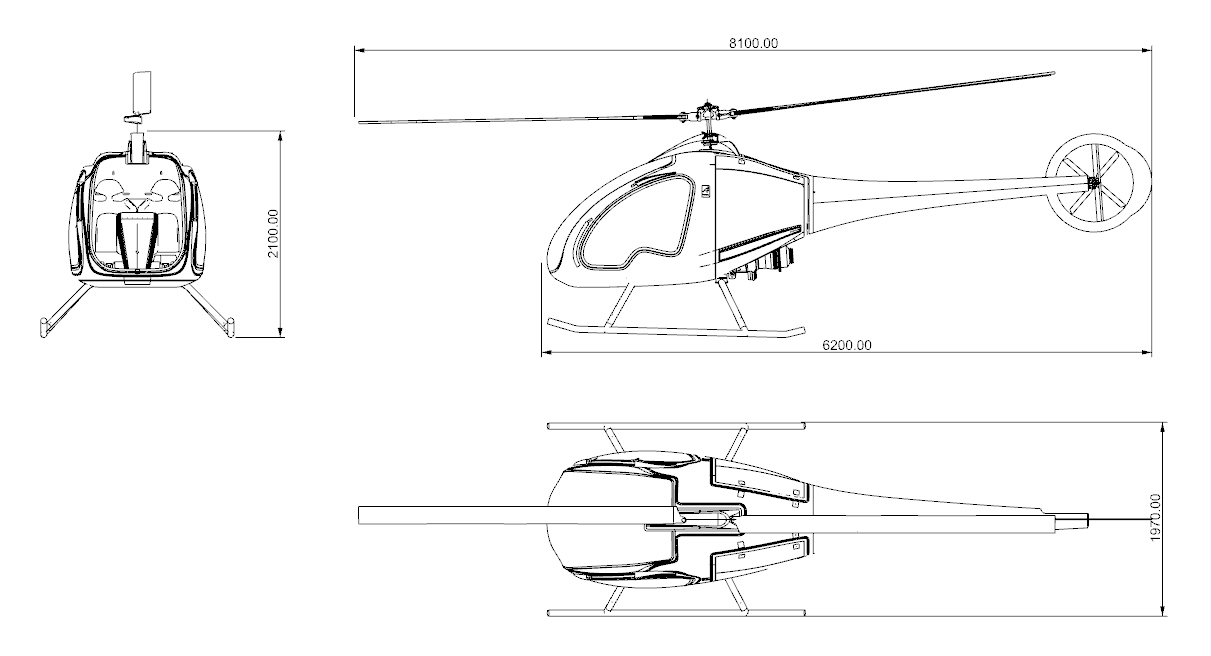The Piranha's fuselage and stucture
|
THE FUSELAGE:
The structural core of the Piranha is the composite airframe. It is composed of a light-weight, but extremely strong, matrix of graphite, epoxy, and nomex honeycomb cores. The actual engine mount/ assembly is literally bolted to the rear of the seat. The fuselage fairing is nonstructural and is a graphite/epoxy construct proven to be both light and durable. The sleek design and lightweight nature of the composites preserves a very high power to weight ratio performance and aerodynamic nature. Assembly has been structurally tested to conform to FAR Part 27 certification standards. THE TRANSMISSION:
Safety factor on critical components is 5:1. |
THE BLADES:
Obviously, rotor blades are to a rotor- craft what wings are to an airplane... but few people have any concept of how difficult it is to engineer an aerodynamic surface that has to spin at several hundred rpm. Fixed-wing aircraft can experience a number of minor and secondary failures or ailments in a wing. And have tungsten leading-edge weights in the outside 50% of the blades. All composite, the moderately- cambered blades feature a graphite/ epoxy/fiberglass spar pre-molded and bonded to a nomex honeycomb trailing edge core structure, which is wrapped in a fiberglass skin, and then heat cured. A polyethylene erosion strip is applied to the leading edge after primary finishing enhancing the long-term integrity of the rotor. The Piranha’s unlimited-life main rotor blade system has been exhaus-tively designed for durability and efficiency. The blades, laid up by hand and cured in 260-degree ovens, possess eight degrees of twist linearly. The efficiency of the system is such that the rotor produces 15 lbs of lift for each horsepower’s input due to the low disk loading. |

 The Piranha uses a revolutionary clutch system that is capable of smoothly transitioning the direct power off turbine engine onto the
main and tail rotor blades. The materials are all made from Aluminium grade 7075- T6. The single most important mechanical significance is that
rotor blades are powered by the turbine by a single motion. This means that the dangers and inefficiencies of a belt driven configuration do not apply as there are no belts.
The Piranha uses a revolutionary clutch system that is capable of smoothly transitioning the direct power off turbine engine onto the
main and tail rotor blades. The materials are all made from Aluminium grade 7075- T6. The single most important mechanical significance is that
rotor blades are powered by the turbine by a single motion. This means that the dangers and inefficiencies of a belt driven configuration do not apply as there are no belts.